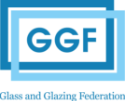Find a glazing installer who use Edgetech
Finding glazing installers in your local area who use Edgetech warm edge technology couldn’t be easier.
Traditionally made of aluminium, spacer bars are placed between the glazing in an insulated glass unit (IGU). The problem with aluminium is that it is not very thermally efficient due to being a conductor, so heat can quickly be lost.
Warm edge technology uses non-conductive silicone foam, which is not only more thermally efficient but also allows more flexibility within the IGU, meaning it will perform better under pressure caused by high winds and changes in temperature.
Technology has moved on incredibly in the last 15 years and replacing old windows, doors or other glazing you currently have, with modern versions incorporating Edgetech’s Super Spacer® will result in:
Edgetech’s Super Spacer® was also presented with an official Passive House competent seal, and around a third of all UK glass units are now made with Edgetech warm-edge technology.
This will depend on the overall thickness of the unit, for example, if a triple-glazed unit is below 36mm than the same performance can be achieved through a double-glazed unit, depending on the different types of glass technology used. It is also important to bear in mind that higher-performance triple-glazing requires a thicker frame. However, triple-glazing is the only way to reach optimum levels of thermal performance that will likely be required as building standards are tightened.
There are six most used types of glass, each with their pros and cons. Below is a list which will help you to decide which would best suit your home.
Float glass
Plain glass with no colour, it is not toxic, is not treated, is durable to temperature changes, remains a cost-effective option, and is 100% recyclable.
Laminated glass
Laminated glass is almost impossible to break and even if broken it will remain in the frame and not shatter, making it an ideal choice for those with young children or pets and in areas where increased security is required. Blocking of UV rays helps lower emissions whilst its thickness minimises noise. Laminated glass can be used in more bespoke designs due to its ability to be tinted and curved.
Obscure glass
More widely known as privacy glass, obscure glass is either fully or partly opaque and is used to give a sense of privacy while maintaining efficiency and light transmission.
Tempered glass
Tempered glass (also known as toughened glass) is usually at least four times as strong as normal glass, twice as soundproof, heat resistant, extremely difficult to break and shatterproof. Due to these properties it is specified in many locations for safety, for eg. in glazing below 800mm from the floor level.
Low-E glass
Designed to deflect heat in summer and retain heat in winter, low-E glass allows for maximum light penetration whilst maintaining an optimum interior temperature.
Insulating glass
When 2 or more panes of glass are manufactured into one unit it is called an insulating glass unit (IGU). IGUs are often filled with argon gas (and less often xenon or krypton) in order to further increase thermal efficiency.
To increase thermal efficiency, gas can be used to insulate between panes of glass in double or triple glazing. Argon is the most popular with consumers due to its effectiveness, however, it increases the thickness alternative gases such as krypton or xenon may be used in certain applications instead. The use of argon as insulation also helps control noise pollution.
Finding glazing installers in your local area who use Edgetech warm edge technology couldn’t be easier.
Please fill out the form below to a find a local supplier. Once we've found your closest suppliers you will be able to view them.
Where applicable your enquiry will be passed to up to 3 carefully selected partners local to you, so that they can get in touch to discuss your project.
Your enquiry has been successfully submitted. You should receive an email or callback with 24-48 hours.
Return to the homepage




